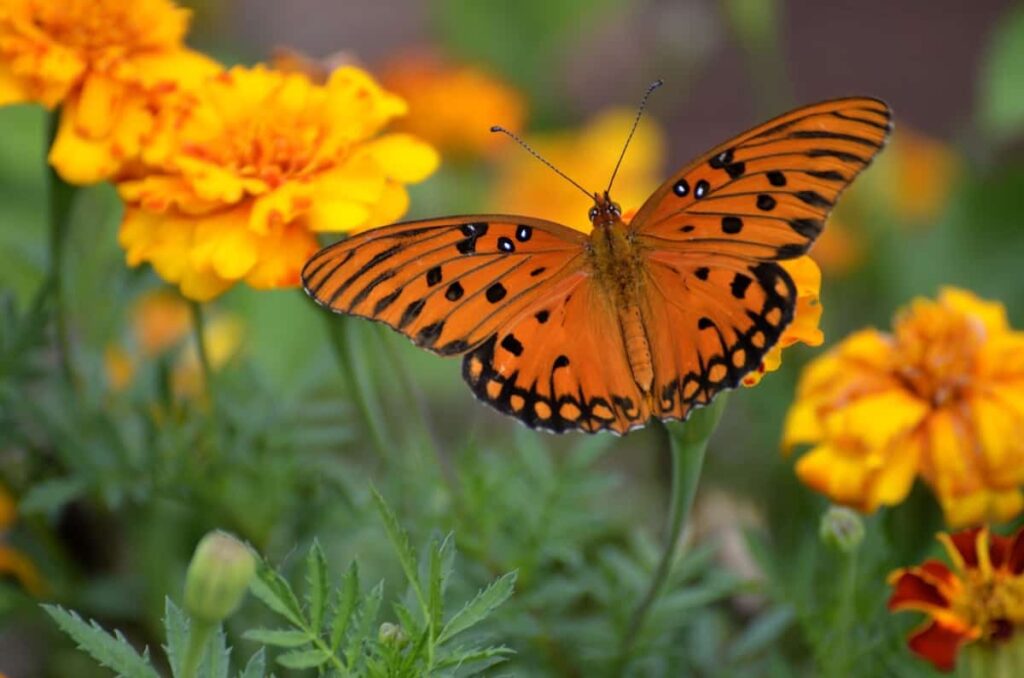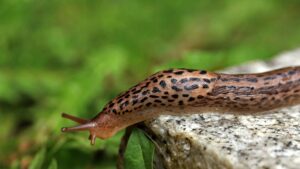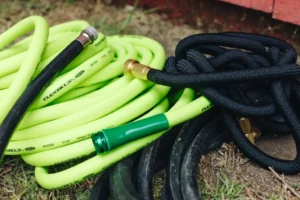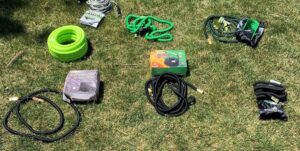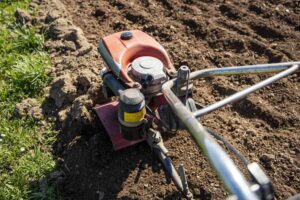How to Create a Butterfly Garden: A Complete Guide
Are you looking to transform your outdoor space into a vibrant, living sanctuary? Creating a butterfly garden not only adds beauty to your landscape but also provides crucial habitat for these essential pollinators. With butterfly populations declining across the United States, your garden can become a vital refuge that supports biodiversity while bringing endless joy as you watch these delicate creatures flutter from bloom to bloom.
This comprehensive guide will walk you through everything you need to know to design, plant, and maintain a successful butterfly garden—no matter your experience level or garden size.
Why Create a Butterfly Garden?
Butterflies play a crucial role in our ecosystem as pollinators, second only to bees in their importance. According to the U.S. Forest Service, these beautiful insects pollinate over 80% of the world’s flowering plants. However, habitat loss, pesticide use, and climate change have caused alarming declines in butterfly populations across North America.
By creating a butterfly garden, you’ll:
- Support declining butterfly populations
- Enhance local biodiversity
- Enjoy beautiful, low-maintenance landscaping
- Create educational opportunities for children
- Increase pollination in your vegetable garden and fruit trees
- Contribute to conservation efforts right from home
Understanding Butterfly Needs
To create an effective butterfly garden, you need to understand the butterfly lifecycle and their basic requirements. Butterflies undergo complete metamorphosis through four distinct stages: egg, caterpillar (larva), chrysalis (pupa), and adult butterfly.
A successful butterfly garden must support each of these stages by providing:
- Host plants for females to lay eggs and for caterpillars to feed on
- Nectar plants for adult butterflies to feed on
- Shelter from predators and weather
- Water sources for hydration and minerals
- Sunlight for warmth and flight activity
Planning Your Butterfly Garden
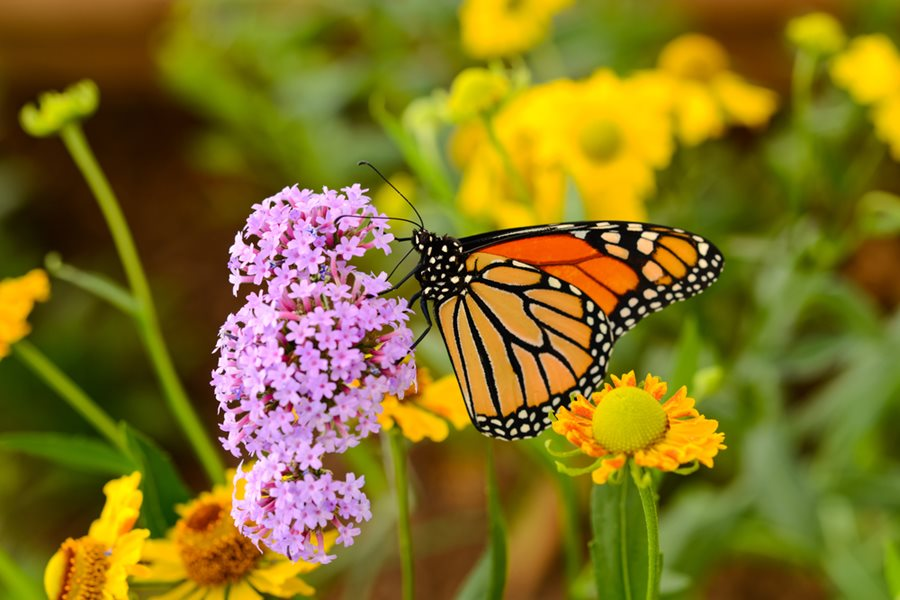
Assessing Your Space
The first step is to evaluate your available space. The good news is that butterfly gardens can be created in virtually any setting:
- Suburban backyard
- Urban balcony or rooftop
- Community garden plot
- School grounds
- Business landscaping
When selecting your location, prioritize areas that receive at least 6 hours of direct sunlight daily, as most butterfly-friendly plants thrive in full sun, and butterflies themselves need warmth to fly effectively.
Identifying Local Butterfly Species
Different regions of the United States host different butterfly species. Research which butterflies are native to your area to ensure you’re planting the right host and nectar plants. The North American Butterfly Association offers regional guides, and your local extension office can provide specific information for your county.
Some of the most common butterfly species across the US include:
- Monarch
- Painted Lady
- Black Swallowtail
- Eastern Tiger Swallowtail
- Gulf Fritillary
- Red Admiral
- Common Buckeye
- American Lady
Designing Your Garden Layout
Consider these design elements when planning your butterfly garden:
Plant Groupings: Plant in clusters rather than individual plants. Groups of at least three of the same plant species make it easier for butterflies to locate food sources.
Plant Heights: Incorporate a variety of plant heights to create layers in your garden. Taller plants can provide windbreaks and shelter.
Garden Shape: Curves and flowing lines are more appealing than straight rows, both visually and for butterfly navigation.
Year-Round Blooms: Schedule plantings so something is blooming in your garden from early spring through late fall to provide continuous nectar sources.
Resting Areas: Include flat rocks for butterflies to bask in the sun and warm their wings.
Essential Plants for Your Butterfly Garden
Host Plants
Host plants are species that butterfly caterpillars feed on. Each butterfly species has specific host plant requirements, making these plants essential for reproduction. Here are some of the most versatile host plants for common butterfly species:
| Butterfly Species | Host Plants | USDA Zones |
|---|---|---|
| Monarch | Milkweed (Asclepias spp.) | 3-10 |
| Black Swallowtail | Parsley, Dill, Fennel, Carrots | 3-9 |
| Eastern Tiger Swallowtail | Black Cherry, Tulip Tree, Birch | 4-9 |
| Painted Lady | Thistles, Hollyhock, Mallow | 3-10 |
| Gulf Fritillary | Passion Vine (Passiflora) | 7-10 |
| Great Spangled Fritillary | Violets | 3-8 |
| Red Admiral | Nettles | 3-9 |
| Cloudless Sulphur | Senna, Cassia | 7-10 |
Nectar Plants
While host plants support reproduction, nectar plants provide food for adult butterflies. The best nectar plants typically share these characteristics:
- Bright colors (especially purple, pink, yellow, and orange)
- Flat-topped or clustered flower shapes
- Long blooming periods
- Native to your region
Popular nectar plants include:
Spring Bloomers:
- Lilac
- Dianthus
- Phlox
- Columbine
- Chives
Summer Bloomers:
- Coneflower (Echinacea)
- Bee Balm (Monarda)
- Butterfly Bush (Buddleia)
- Black-eyed Susan (Rudbeckia)
- Blazing Star (Liatris)
- Lantana
- Zinnia
- Verbena
Fall Bloomers:
- Aster
- Goldenrod
- Sedum
- Joe-Pye Weed
- Mexican Sunflower (Tithonia)
The U.S. Department of Agriculture’s Natural Resources Conservation Service offers extensive regional plant guides to help you select appropriate native species for your area.
Creating Your Butterfly Garden
Soil Preparation
Most butterfly-friendly plants prefer well-draining soil with moderate fertility. Before planting:
- Test your soil’s pH and composition (most county extension offices offer affordable testing)
- Add organic matter like compost to improve soil structure
- Consider raised beds if your soil drains poorly
- Avoid synthetic fertilizers, which can harm butterfly larvae
Planting Techniques
The best times to plant are spring and fall when temperatures are moderate and rainfall is typically adequate. When planting:
- Space plants according to their mature size to allow for proper air circulation
- Plant in groups of 3-5 of the same species
- Position taller plants toward the back of the garden and shorter ones in front
- Mulch around plants (but not against stems) to reduce weeds and retain moisture
- Water thoroughly after planting
Water Sources
Butterflies need water, but not in the way birds do. They prefer:
- Shallow puddles (create puddle areas with sand in a shallow dish)
- Damp soil where they can extract minerals
- Morning dew on leaves
- Overripe fruit placed in your garden
A popular option is to create a “butterfly puddling station” by filling a shallow dish with sand and keeping it moist.
Maintaining Your Butterfly Garden
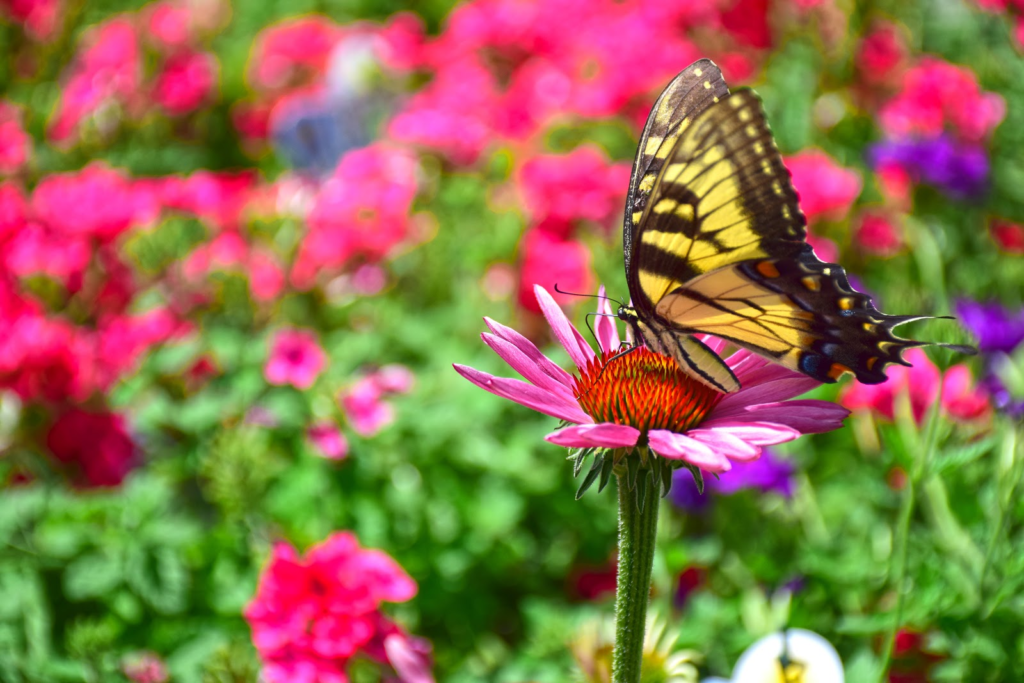
Sustainable Practices
To maintain a healthy butterfly garden:
Eliminate Pesticides: Even organic pesticides can harm butterflies and their larvae. Instead, encourage beneficial insects like ladybugs and lacewings that prey on garden pests.
Limited Pruning: Avoid heavy pruning, especially in fall and winter, as butterfly eggs and chrysalides may be attached to stems and leaves.
Selective Cleaning: Leave leaf litter and some dead plant material as winter shelter for chrysalides and hibernating adults.
Weed Management: Remove aggressive weeds that compete with your butterfly plants, but be careful not to remove “volunteer” host plants like milkweed that may appear.
Seasonal Considerations: According to the National Wildlife Federation, leaving your garden “messy” in fall and winter provides crucial overwintering habitat for many butterfly species.
Seasonal Maintenance Calendar
Spring:
- Cut back dead foliage from previous year once temperatures consistently reach 50°F
- Divide and transplant perennials as needed
- Add new plants as garden expands
- Begin monitoring for first butterfly visitors
Summer:
- Deadhead flowers regularly to encourage continued blooming
- Water during dry periods, especially new plantings
- Document butterfly species that visit your garden
- Add annual nectar plants to fill any bloom gaps
Fall:
- Plant spring-blooming bulbs
- Add fall-blooming nectar sources
- Leave seed heads for birds and some shelter for overwintering insects
- Consider collecting seeds for next year’s garden
Winter:
- Leave plant stalks and seed heads standing until spring
- Plan next year’s additions
- Order seeds and plants for spring
- Create garden journal to track butterfly visitors and plant performance
Overcoming Common Challenges
Limited Space
Even with minimal space, you can attract butterflies:
- Container gardens with compact varieties of butterfly plants
- Vertical gardening with trellises for vining plants like passion flower
- Window boxes with nectar plants
- Community garden plots dedicated to pollinator plants
Budget Constraints
Creating a butterfly garden doesn’t have to be expensive:
- Start small and expand gradually
- Exchange plant divisions with neighbors
- Grow plants from seeds
- Attend native plant society sales
- Apply for pollinator garden grants from conservation organizations
Pest Management
Some insects may damage your plants, but remember that caterpillars (butterfly larvae) are supposed to eat certain plants. To manage unwanted pests:
- Handpick larger pests like aphids
- Use strong water sprays for aphid infestations
- Introduce beneficial insects like ladybugs
- Accept some plant damage as part of the natural ecosystem
Climate Adaptations
Different regions require different approaches:
Hot, Dry Regions:
- Focus on drought-tolerant nectar plants
- Install drip irrigation to conserve water
- Provide additional shade in extremely hot areas
- Use deeper mulch to retain soil moisture
Cold Regions:
- Select cold-hardy native species
- Plant in sheltered locations
- Consider potted plants that can be moved indoors during extreme cold
- Use plant coverings during unexpected late frosts
Education and Community Involvement
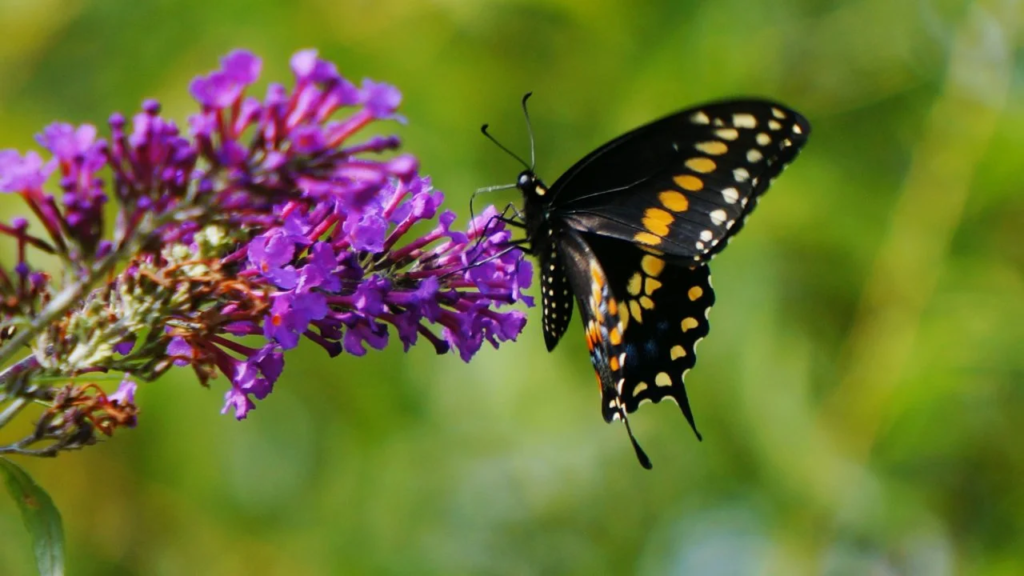
Certification and Recognition
Several organizations offer certification for your butterfly garden:
- Monarch Watch Monarch Waystation certification
- North American Butterfly Association Butterfly Garden certification
- National Wildlife Federation Certified Wildlife Habitat program
Sharing Your Garden
Your butterfly garden can become a valuable community resource:
- Host garden tours for neighbors or local garden clubs
- Partner with local schools for educational visits
- Participate in citizen science projects that monitor butterfly populations
- Document your garden’s butterfly visitors through photography
- Share extra plants and seeds with others interested in starting their own butterfly gardens
Conclusion
Creating a butterfly garden is more than just a landscaping project—it’s a way to connect with nature, support biodiversity, and make a tangible difference in your local ecosystem. Whether you have acres of land or just a small balcony, your efforts can provide critical habitat for these beautiful creatures while bringing color, movement, and joy to your outdoor space.
By integrating the right plants, sustainable practices, and thoughtful design, you’ll create a thriving butterfly sanctuary that benefits both wildlife and your well-being. As the Environmental Protection Agency notes, even small-scale conservation efforts like butterfly gardens contribute significantly to environmental health and biodiversity when adopted by many individuals.
Start small, observe what works in your specific location, and expand your garden as you gain experience. With time and care, your butterfly garden will evolve into a dynamic, living ecosystem that offers endless opportunities for discovery and appreciation of the natural world.
Remember, every flutter of wings in your garden represents a small victory for conservation that begins right in your own backyard.
